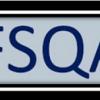- Home
- Sponsors
- Forums
- Members ˅
- Resources ˅
- Files
- FAQ ˅
- Jobs
-
Webinars ˅
- Upcoming Food Safety Fridays
- Upcoming Hot Topics from Sponsors
- Recorded Food Safety Fridays
- Recorded Food Safety Essentials
- Recorded Hot Topics from Sponsors
- Food Safety Live 2013
- Food Safety Live 2014
- Food Safety Live 2015
- Food Safety Live 2016
- Food Safety Live 2017
- Food Safety Live 2018
- Food Safety Live 2019
- Food Safety Live 2020
- Food Safety Live 2021
- Training ˅
- Links
- Store ˅
- More

Testing for Microorganisms for Environmental monitoring
Started by Eric C, Feb 21 2023 03:43 PM
13 replies to this topic
#1

Posted 21 February 2023 - 03:43 PM
Hi everyone, I'm trying to build an SOP for SQF code 2.4.7.1 "Environmental monitoring".
Can anyone provide a reference regarding test organisms that are commonly used for Micro testing, and what micos should we consider for monitoring?
We produce mayonnaise and Salad dressing (Food categories 18).
Thank you so much for your help and advice!!
#2

Posted 21 February 2023 - 05:01 PM
Have you created your Process Hazard Analysis yet? I based my environmental testing on what biological risks could be found in my food. We are a bakery so listeria and salmonella are my main concerns.
|
Thanked by 1 Member:
|
|
#3

Posted 21 February 2023 - 05:40 PM
Salmonella (if you have eggs in your mayonnaise) and listeria because it is ubiquitous. 😊
Listeria like it cold and wet and Salmonella prefers dry environments.
Listeria like it cold and wet and Salmonella prefers dry environments.
#4

Posted 21 February 2023 - 08:27 PM
Have you created your Process Hazard Analysis yet? I based my environmental testing on what biological risks could be found in my food. We are a bakery so listeria and salmonella are my main concerns.
Thank you wbourg. What kinds of the testing kit do you use for the monitoring? Does it needs the certificate from lab for the testing tool?
Edited by Eric C, 21 February 2023 - 08:28 PM.
#5

Posted 21 February 2023 - 08:29 PM
Salmonella (if you have eggs in your mayonnaise) and listeria because it is ubiquitous.
Listeria like it cold and wet and Salmonella prefers dry environments.
Thank you AJL.
#6

Posted 21 February 2023 - 08:49 PM
I would always recommend sending the swabs to an external lab. It's not very common any more for companies to do pathogen testing in-house. It poses a risk to your product.
#7

Posted 22 February 2023 - 12:48 AM
Hi everyone, I'm trying to build an SOP for SQF code 2.4.7.1 "Environmental monitoring". Can anyone provide a reference regarding test organisms that are commonly used for Micro testing, and what micos should we consider for monitoring? We produce mayonnaise and Salad dressing (Food categories 18). Thank you so much for your help and advice!!
Hi Eric,
afai can see, SQF Food ver9 - 2.4.7.1 is not related to EMPG ??
Some General refs to EMPG here -
http://www.ifsqn.com...ls/#entry100060
http://www.ifsqn.com...am/#entry119334
(these tend to be older versions but often still represent the main bulk of newer versions)
EMPG test mcogs fall into 2 categories -
(1) indicator species/groups for hygiene assessment, eg Enterobacteriaceae, coliforms, generic E.coli
(2) pathogenic species, often related to specific product/wet or dry environment, eg Salmonella, L.monocytogenes, pathogenic E.coli
There are numerous SQF-specific threads here regarding EMPG.
Kind Regards,
Charles.C
#8

Posted 22 February 2023 - 10:54 AM
Thank you wbourg. What kinds of the testing kit do you use for the monitoring? Does it needs the certificate from lab for the testing tool?
As others have stated we do not do pathogen testing in house. We send to an ISO certified lab.
We do do indicator species testing for search and destroy missions in house. We use basic Charm plate kits and swabs for this. It is the most effective way to get production to clean that dirty spot they won't clean.
#9

Posted 22 February 2023 - 01:47 PM
If your objective the indicator organism, the most common ones are for food safety and hygiene are :
- total coliforms,
- Listeria monocytogenes,
- Salmonella,
- Cronobacter spp.
- fecal coliforms,
- E. coli, and
- enterococci.
Before making SOP for detecting or testing any of those, I will see available resources in my facility, skills available and if your can perform rapid tests. In addition, you will need sampling plan and schedule. Both of these will impact your budget for testing (environmental monitoring).
Lastly, if you plan to make an SOP for the test, I will not spend time on it. Because these are standard tests, I will look for references and use them. Do not waste time writing these from scratch.
#10

Posted 22 February 2023 - 01:54 PM
Hi Eric,
afai can see, SQF Food ver9 - 2.4.7.1 is not related to EMPG ??
Some General refs to EMPG here -
http://www.ifsqn.com...ls/#entry100060
http://www.ifsqn.com...am/#entry119334
(these tend to be older versions but often still represent the main bulk of newer versions)
EMPG test mcogs fall into 2 categories -
(1) indicator species/groups for hygiene assessment, eg Enterobacteriaceae, coliforms, generic E.coli
(2) pathogenic species, often related to specific product/wet or dry environment, eg Salmonella, L.monocytogenes, pathogenic E.coli
There are numerous SQF-specific threads here regarding EMPG.
Very much appreciated these references.
#11

Posted 22 February 2023 - 01:58 PM
As others have stated we do not do pathogen testing in house. We send to an ISO certified lab.
We do do indicator species testing for search and destroy missions in house. We use basic Charm plate kits and swabs for this. It is the most effective way to get production to clean that dirty spot they won't clean.
It's very useful information for me! Very much appreciated!!
#12

Posted 22 February 2023 - 02:00 PM
If your objective the indicator organism, the most common ones are for food safety and hygiene are :
- total coliforms,
- Listeria monocytogenes,
- Salmonella,
- Cronobacter spp.
- fecal coliforms,
- E. coli, and
- enterococci.
Before making SOP for detecting or testing any of those, I will see available resources in my facility, skills available and if your can perform rapid tests. In addition, you will need sampling plan and schedule. Both of these will impact your budget for testing (environmental monitoring).
Lastly, if you plan to make an SOP for the test, I will not spend time on it. Because these are standard tests, I will look for references and use them. Do not waste time writing these from scratch.
Very useful references. Thank you so much!!
#13

Posted 22 February 2023 - 08:33 PM
If your objective the indicator organism, the most common ones are for food safety and hygiene are :
- total coliforms,
- Listeria monocytogenes,
- Salmonella,
- Cronobacter spp.
- fecal coliforms,
- E. coli, and
- enterococci.
Before making SOP for detecting or testing any of those, I will see available resources in my facility, skills available and if your can perform rapid tests. In addition, you will need sampling plan and schedule. Both of these will impact your budget for testing (environmental monitoring).
Lastly, if you plan to make an SOP for the test, I will not spend time on it. Because these are standard tests, I will look for references and use them. Do not waste time writing these from scratch.
Any main subject will you recommend for the references research?
#14

Posted 23 February 2023 - 03:48 PM
Any main subject will you recommend for the references research?
Hi Eric,
The (Regulatory) answer, ie not necessarily SQF, may also relate to where you are, eg do you have to satisfy USFDA or ?
For SQF I anticipate you refer to 2.4.8.1 whereby xxx.2 spells out the minimum necessities. If you need a full sampling procedure for Listeria, the one issued by CFIA is impressive but likely involves not inconsiderable effort to implement. On the other hand, if you can work with a basic routine program the one offered by AIB (see links Post 7) looks quite attractive although lacking suggested numbers of samples. The latter can be readily found in other documents linked in Post 7 (theoretically varies between risk of locations).
PS - I suggest you also look at SQF9's Guidance article which is quite similar to the Guidance in sqf ver 8.1. I am not a SQF user but In both cases, their brevity suggests (to me) that SQF are not anticipating a highly, in-depth, analysis/response. (any SQF users here welcome to correct me if otherwise).
Edited by Charles.C, 23 February 2023 - 04:22 PM.
added
Kind Regards,
Charles.C
Also tagged with one or more of these keywords: Environmental monitoring, SQF code 2.4.7.1, Microorganisms
Global Food Safety Standards →
SQF Food →
SQF: Why Environmental Monitoring Is a Pet Food Plant's Early-Warning SystemStarted by Tony-C, 31 Oct 2025 |
|

|
|
Food Safety Topics →
Lab Management & Testing →
Acceptable Temperatures for Storing Environmental Monitoring SwabsStarted by zstubbs, 23 Jul 2025 |
|

|
|
Government Regulatory →
USDA - United States Department of Agriculture →
Environmental Monitoring Program Concerns at USDA-Regulated Meat FacilityStarted by BobbyLow859, 01 Jul 2025 |
|

|
|
Welcome to the IFSQN →
Welcome! Introduce Yourself →
IntroductionStarted by Sean D, 25 Mar 2025 |
|

|
|
Food Safety Topics →
Food Microbiology →
Yeast and Mould spec in 100L of AirStarted by Twinkle, 30 Sep 2024 |
|

|
1 user(s) are reading this topic
0 members, 1 guests, 0 anonymous users












